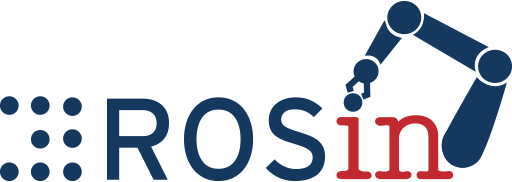ros2_control is under heavy development, to get an update of the project please either tag along to one of our working group meetings (see more on discourse) and/or check the resources below:
- Actively tracked projects can be found here: https://github.com/orgs/ros-controls/projects
- Consult the roadmap here: https://github.com/ros-controls/roadmap
- See demos here (under heavy development): https://github.com/ros-controls/ros2_control_demos
ros2_control is a proof of concept on how new features within ROS 2 can be elaborated and used in the context of robot control.
We were keeping the vocabulary close the ROS 1 implemenation, however this is with no notion a migration, but rather a fresh new-write.
We hope that this can be a starting point for migrating ros_control to ROS 2 at some point.
Reasons for re-writing this repo from scratch rather than porting existing code to ROS 2 syntax is to leverage the new ROS 2 concepts in full.
The work done in this repo (together with ros2_controllers) was presented at ROSCon 2017 and is currently not under active development.
In order to be able to compile these two repos, a complete ROS 2 installation is necessary. Please find instructions on how to install ROS 2 here. At the time of writing, there exist binaries for ROS 2 (Foxy Fitzroy) for all three major operating systems as well as detailed installation instructions when compiling from source.
Once ROS 2 is successfully installed, an overlay workspace can be created for the ros2_control packages.
$ mkdir -p ~/ros2_control_ws/src
$ cd ~/ros2_control
$ wget https://raw.githubusercontent.com/ros-controls/ros2_control/master/ros2_control/ros2_control.repos
$ vcs import src < ros2_control.reposWe can then compile the overlay workspace. For this we first have to source the ROS 2 installation. In this case, we source the setup.bash from the Foxy binary distribution for Ubuntu. Obviously, the path to the setup file is different on each platform and thus has to be adjusted. Once ROS 2 is sourced, we can compile the ros2_control packages.
$ cd ~/ros2_control_ws
$ source /opt/ros/foxy/setup.bash # this has to be adjusted for ROS-Distro and/or OS
$ colcon buildThere are currently three controllers available:
- JointStateController
- JointTrajectoryController
- DiffDriveController
Both can be loaded through the controller manager from the ament_resource_index.
What's new in ROS 2 are Managed Nodes.
That means, every LifecycleNode adheres to an underlying state machine as described in the linked wiki page.
We feature this for the controller interface in this work and thus every controller implicitly has means to start and stop the controller.
Similar to the ROS 1 implementation, each controller has to implement two functions: init and update.
We refer to the ROS 1 wiki for a general overview.
Similar as to the ROS 1 implementation, every hardware platform has to implement the robot_hardware_interface
Essentially, these three functions are required for every hardware and have to be implemented in a hardware-dependent manner.
HARDWARE_INTERFACE_PUBLIC
virtual
return_type init() = 0;
HARDWARE_INTERFACE_PUBLIC
virtual
return_type read() = 0;
HARDWARE_INTERFACE_PUBLIC
virtual
return_type write() = 0;One possible example could be:
hardware_interface::return_type
MyRobot::init()
{
auto joint_names = {
"my_robot_joint_1",
"my_robot_joint_2",
};
size_t i = 0;
for (auto & joint_name : joint_names) {
hardware_interface::JointStateHandle state_handle(joint_name, &pos_[i], &vel_[i], &eff_[i]);
joint_state_handles_[i] = state_handle;
if (register_joint_state_handle(&joint_state_handles_[i]) != hardware_interface::OK) {
throw std::runtime_error("unable to register " + joint_state_handles_[i].get_name());
}
hardware_interface::JointCommandHandle command_handle(joint_name, &cmd_[i]);
joint_command_handles_[i] = command_handle;
if (register_joint_command_handle(&joint_command_handles_[i]) !=
hardware_interface::OK)
{
throw std::runtime_error("unable to register " + joint_command_handles_[i].get_name());
}
++i;
}
}
hardware_interface::return_type
MyRobot::read()
{
// do robot specific stuff to update the pos_, vel_, eff_ arrays
}
hardware_interface::return_type
MyRobot::write()
{
// do robot specific stuff to apply the command values from cmd_ to the robot
}This robot hardware can then be loaded through the controller manager:
void
spin(std::shared_ptr<rclcpp::executors::MultiThreadedExecutor> exe)
{
exe->spin();
}
int main()
{
// do all the init stuff
// Logger
const rclcpp::Logger logger = rclcpp::get_logger("my_robot_logger");
// create my_robot instance
auto my_robot = std::make_shared<MyRobot>();
// initialize the robot
if (my_robot->init() != hardware_interface::return_type::OK) {
fprintf(stderr, "failed to initialized yumi hardware\n");
return -1;
}
auto executor =
std::make_shared<rclcpp::executors::MultiThreadedExecutor>();
// start the controller manager with the robot hardware
controller_manager::ControllerManager cm(my_robot, executor);
// load the joint state controller.
// "ros_controllers" is the resource index from where to look for controllers
// "ros_controllers::JointStateController" is the class we want to load
// "my_robot_joint_state_controller" is the name for the node to spawn
cm.load_controller(
"my_robot_joint_state_controller",
"joint_state_controller/JointStateController");
// load the trajectory controller
cm.load_controller(
"my_robot_joint_trajectory_controller",
"joint_trajectory_controller/JointTrajectoryController");
// there is no async spinner in ROS 2, so we have to put the spin() in its own thread
auto future_handle = std::async(std::launch::async, spin, executor);
// we can either configure each controller individually through its services
// or we use the controller manager to configure every loaded controller
if (cm.configure() != controller_interface::return_type::SUCCESS) {
RCLCPP_ERROR(logger, "at least one controller failed to configure")
return -1;
}
// and activate all controller
if (cm.activate() != controller_interface::return_type::SUCCESS) {
RCLCPP_ERROR(logger, "at least one controller failed to activate")
return -1;
}
// main loop
hardware_interface::return_type ret;
while (active) {
ret = my_robot->read();
if (ret != hardware_interface::return_type::OK) {
fprintf(stderr, "read failed!\n");
}
cm.update();
ret = my_robot->write();
if (ret != hardware_interface::return_type::OK) {
fprintf(stderr, "write failed!\n");
}
r.sleep();
}
executor->cancel();
}
Supported by ROSIN - ROS-Industrial Quality-Assured Robot Software Components.
More information: rosin-project.eu
This project has received funding from the European Union’s Horizon 2020
research and innovation programme under grant agreement no. 732287.